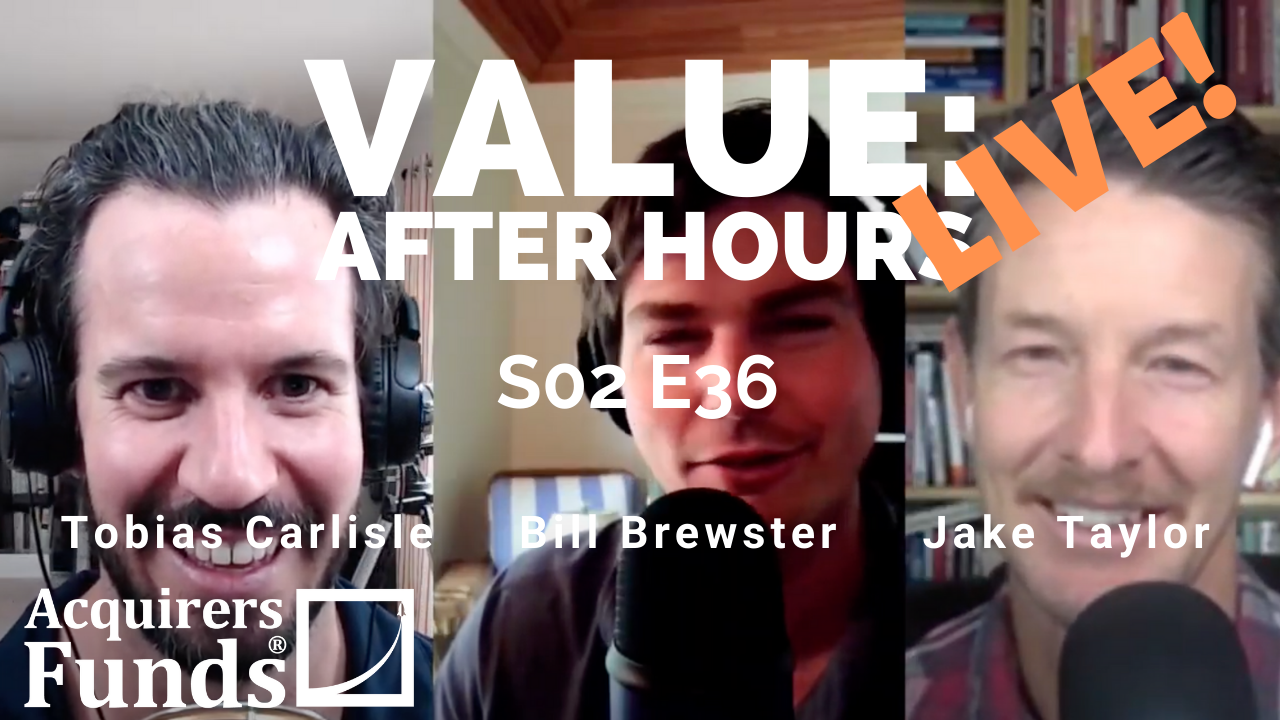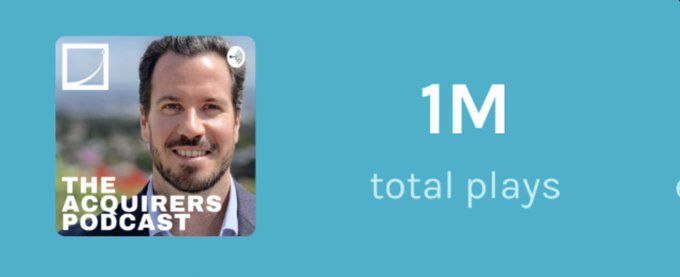During their recent episode of the VALUE: After Hours Podcast, Taylor, Brewster, and Carlisle discussed Slimy Value Investors. Here’s an excerpt from the episode:
Bill: No, let’s talk about slime.
Jake: All right, let’s get slimy, some veggie time. All right. Slime molds are these blobs that are created out of single-celled amoebas that then Voltron together to become the slime molds. And you’ll find them in soil or in a rotted-out tree stump or something.
Bill: Can we talk about what Voltroning together means? It sounds like they just come together. Nice Topo Chico.
Jake: Yeah, the Topo. I need the Topo. [crosstalk] We need to be sponsored by Topo.
Bill: It’s like Coke money.
Jake: Yeah, they’re the single-celled amoebas, but they join together to create these molds that will look like a mushroom. Some of them will basically almost sacrifice themselves into the structure so that out at the tip, they will release these spores that typically will get picked up by an insect or something and moved. And they trigger this behavior whenever they start getting low on food. So, the amoebas, they eat bacteria. To avoid starving, they Voltron together and increase their chances of survival.
Tobias: So, they’re trying to shift the entire– they’re trying to move the culture somewhere else. They’re trying to move the organism or organisms somewhere else. They band together to hope that some of the genetic code keeps on going somewhere else.
Jake: Exactly. Everyone focused on this emergent social behavior that they’re doing. And they missed the fact that there were a bunch of these little slime molds or amoebas who didn’t join the mold, and they hung out away from it.
Tobias: The value investors.
Bill: [crosstalk] [laughter]
Jake: I was wondering like–
Bill: [laughs] [crosstalk] –y’all got killed.
Jake: Yeah. There’s this evolutionary biologist at Princeton, whose name is Corina Tarnita. And she discovered that all of these particular amoebas would hang out. She sampled a bunch of them and determined that it was actually a genetically induced behavior, which meant that there could be some selection bias for it. Some of them just based on their wiring, from their DNA, choose not to join the slime mold.
So, now it seems counterintuitive that if you don’t help, you’re just going to sit there and starve, where would be the selection pressure for that? But what ends up happening is that they– if the food is to come back suddenly, then these guys are in prime position because they didn’t actually join the structure and harden up, like physically change shapes so that they can’t then take advantage of the new food supply.
So, it doesn’t take a whole lot of leap to start thinking about like capital cycle theory, and when does your capital allocator decide to deploy the resources. William Thorndike, famously in The Outsiders was talking about how these capital allocators, they’re iconoclastic and that’s another word for loner, and these loner amoebae, there’s a lot of overlap there. They choose not to participate in the social– what the herd is doing, what the slime is doing, and they hang out and wait. And then, conditions change, and all of a sudden, they’re in the driver’s seat.
The other thing I wanted to talk through was Pat Dorsey has this really good slide that’s talking about how cap allocation, someone who’s good at it is a rich source of market inefficiency. And the reasons why are, number one, it’s unpredictable. So, it’s really hard to model a good cap allocation if you’re a Wall Street analyst. Number two, it’s unconventional. A lot of times they’re creating value through acquisitions, which is not the norm. Normally, acquisitions end up being value destructive for the acquirer.
Number three, they’re lumpy. The value creation ends up being financially messy, it tends to come in spurts. And they’ll do buybacks in big chunks, tender offers. So, it’s nonlinear often. And then, the fourth thing was that they’re patient, so they’re not focused on meeting short-term projections. And he ties it all together with this really nice saying that, “Structurally low-balled market expectations create enormous opportunity.” So, we can almost think about our heroes of cap allocation as being the loner in the slime mold paradigm.
Tobias: [laughs]
Jake: If you really want to torture biology.
Tobias: Going to get that quote on the cover of the next book.
Jake: Yeah.
Tobias: I love that analogy, and I think that’s very apt for investing. Is it Pat Dorsey saying that these guys are sort of chronically– or is it Thorndike or Dorsey saying these guys are undervalued or this strategy is sort of undervalued, the capital allocation guys?
Jake: Dorsey says that it’s structurally ignored or underappreciated from a market perspective because of those traits. And then, Thorndike did a bunch of vignettes of different cap allocators and what they have in common.
Tobias: I have a little bit of trouble accepting that, honestly. If these companies that run optimally, then that’s about as well as they can go. And all of The Outsider guys do is run these companies optimally. And most of the businesses in the market are run by folks who are either not good at capital allocation or they’re more interested in making more money for themselves. There’s just other issues rather than it being some superpower that you need to–
You can find out more about the VALUE: After Hours Podcast here – VALUE: After Hours Podcast. You can also listen to the podcast on your favorite podcast platforms here:
For all the latest news and podcasts, join our free newsletter here.
Don’t forget to check out our FREE Large Cap 1000 – Stock Screener, here at The Acquirer’s Multiple:




